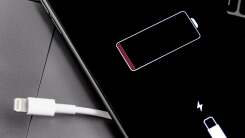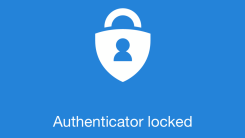How to Link Websites Without the Eventual Broken Links
Have you ever been browsing an older website, only to find yourself face-to-face with a 404 error when you click on a link to a long-abandoned site? W

You might not think about what you plug your phone, tablet, or laptop into as much as you do finding something to give it power. After all, once your device is on the charger, it’s not going to die, and that’s really the main thing. But not all chargers are created equal; if you’re in the habit of plugging your devices into whatever port or outlet is most easily within reach, those devices might be charging much slower than they need to be.
Chargers usually have two parts; the cable, and the power adapter. The power adapter is what many of us call the charging “brick,” and it plugs into your outlet, and the cable obviously connects the power adapter to your device. Sometimes, you can charge without a power adapter, if you plug one device into another, such as a computer, or into an outlet with a USB port. In the case of wireless charging, the charging pad acts as the cable.
The cable typically doesn’t matter for charging speeds; what really matters is that power adapter. Some adapters are more powerful than others, capable of delivering more charge to a device than their smaller counterparts. We measure this power in watts (W). If you take a look at your power adapters, you’ll likely see their rating somewhere on the device; 5W, 18W, 30W, etc.
We’re also not talking about proprietary chargers, either. If your device only chargers with a specific charger, that’s what you’re going to use. We’re talking about mostly USB devices, which can be versatile with the cables and power adapters used for charging.
With all these different power adapters, it’s not always obvious which one is best for your device. Some devices aren’t making things any easier, either, particularly smartphones. Apple set a recent standard of omitting a power adapter with its latest iPhones, a standard other smartphone OEMs are also following. While the company says this decision is fueled by environmental concerns, it leaves the consumer without a power adapter to charge their device. It also leaves the consumer without an idea of what power adapter they should use for their device.
Not that Apple was much help in the past, though. For years, Apple included a measly 5W power adapter with its iPhones. This power adapter might be the one you still use to charge your iPhone. It’s a shame, too, because that 5W charger fuels your iPhone slowly.
All devices have a peak current they can draw from a power adapter. It’s fine to plug those devices into a larger power source than they’re rated for, as the device will only draw the maximum current it’s rated for. If a phone is only rated for 27W, and you plug it into a 35W charger, for example, that phone is still going to top off at 27W. It’s not dangerous.
You can also plug devices into power sources that are lower than those devices are rated for, which brings us back to the iPhone example. Apple introduced fast charging with the iPhone 8, 8 Plus, and X, rated at 15W. The power adapter, however, was 5W. You could safely use that power adapter to slowly juice up your phone, but you’d need to buy a power adapter with at least 15W to take advantage of the full charging speeds.
The best thing to do is to look up your device’s specs. My iPhone 8 Plus, for example, is capable of taking in 15W of power. So, if I plug it into a 12W power adapter, I’m not taking full advantage of its charging capabilities. If I plug it into an 18W power adapter, then I know my phone will charge as fast as possible. The Galaxy Tab 7+, on the other hand, is rated at 45W fast charging. You’ll want to use a power adapter with this wattage or higher in order to max out charging speeds. Anything lower will take longer to charge.
This information can be hard to come across sometimes, however. In the event of laptops, like a MacBook, you’re best served by going off of the charging brick that comes with the machine. The M1 MacBook Air, for example, comes with a 30W power adapter. You can deliver power to it with a smaller USB-C charger, but it’ll charge slowly—and it might actually lose power if you’re actively using the computer. Using a larger power adapter, however, will work fine, as the computer won’t take in more than it can handle.
In short, bigger power adapters are usually better. You won’t hurt your device, and you’ll have a better chance of charging it as fast as it can go.
Wireless charging, while convenient, is a fundamentally slower charging technology than the traditional cable-to-power adapter. You need to buy the right wireless charger to take advantage of the fastest speeds (if your phone can even handle them), and, even then, they aren’t fast.
Unfortunately, you can’t throw a bigger power adapter at a wireless charger and expect it to keep charging faster than its peak. They’re a bit like the devices themselves in this way; once they hit their peak, there’s nowhere else to go.

Have you ever been browsing an older website, only to find yourself face-to-face with a 404 error when you click on a link to a long-abandoned site? W

Because I foolishly chose to use Amazon Music with my Alexa smart speaker (because it’s cheaper, and certainly not because it is better), I can only l

Microsoft is testing out a new password-management feature in its Authenticator app, which makes the former even more useful as a one-stop shop for al

A California judge has certified a class-action lawsuit against Apple for the damage-prone butterfly keyboard design included in MacBook, MacBook Air,

Gazelle used to be a household name for phone trade-ins, but then a lot of companies sprang up to nibble at the service’s lunch. Between that and the

Aukey makes good chargers, or so the many reviews and roundups of them lead me to believe. However, if you’ve been Amazon shopping lately, you might b

If you’ve updated to Chrome OS 91, there are a few hidden features you can turn on, including a new trash can folder and a more convenient interface f

Amazon is so deeply entrenched in our lives that we all have a ton of info connected with the company. Even if you somehow haven’t directly used Amazo
We are a comprehensive and trusted information platform dedicated to delivering high-quality content across a wide range of topics, including society, technology, business, health, culture, and entertainment.
From breaking news to in-depth reports, we adhere to the principles of accuracy and diverse perspectives, helping readers find clarity and reliability in today’s fast-paced information landscape.
Our goal is to be a dependable source of knowledge for every reader—making information not only accessible but truly trustworthy. Looking ahead, we will continue to enhance our content and services, connecting the world and delivering value.